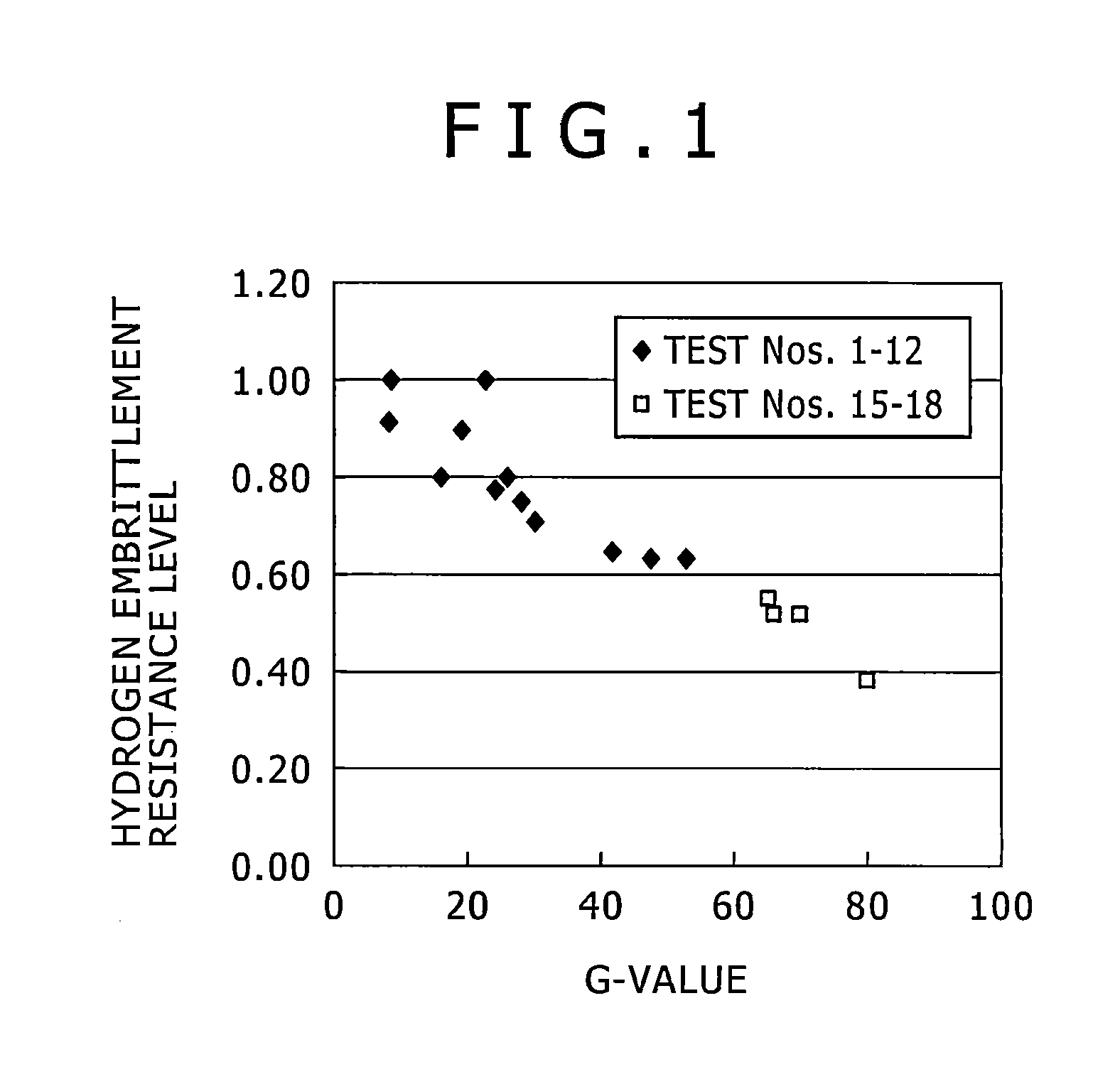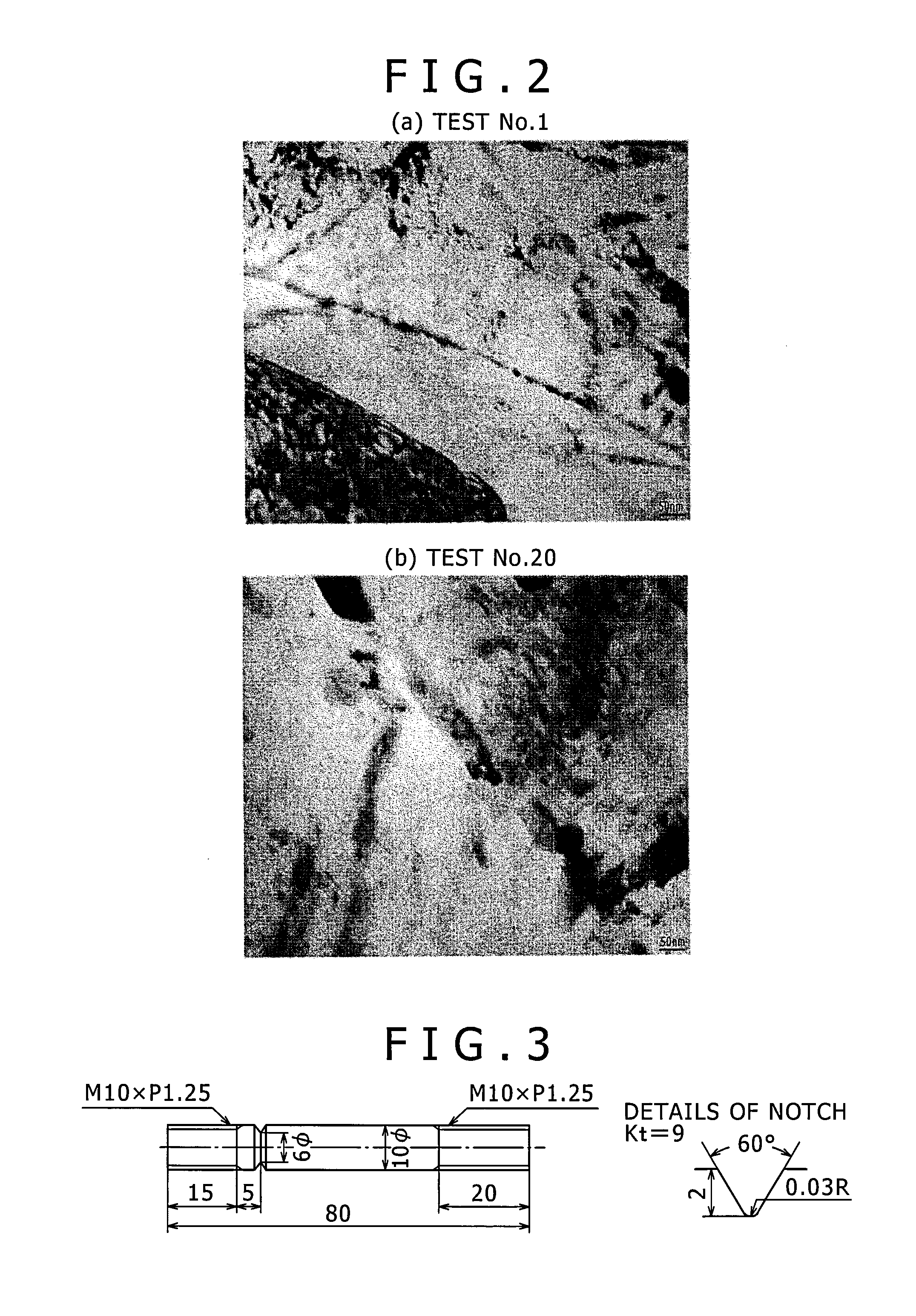Steel for bolt use, bolt, and method for manufacturing bolt
a technology of bolts and steel, applied in the direction of screws, furnaces, heat treatment apparatus, etc., can solve the problems of delayed fracture, impede identification, and not established a process so as to reduce the hydrogen embrittlement site, improve the strength, and improve the effect of preventing hydrogen embrittlemen
- Summary
- Abstract
- Description
- Claims
- Application Information
AI Technical Summary
Benefits of technology
Problems solved by technology
Method used
Image
Examples
experimental example 1
[0100]Hydrogen embrittlement resistance in a cathodic charge environment was examined in Experimental Example 1, the results of which will be described below.
[0101]Steels having chemical compositions given in Table 1 (with the remainder being iron and inevitable impurities) were made by a common ingot-making technique. The steels were cast, hot-rolled under conditions given in Tables 2 and 3, and yielded rolled steels each having a diameter of 14 mm. The rolled steels were subjected sequentially to descaling, a coating treatment, wire drawing, and spheroidizing, and further subjected sequentially to descaling, a coating treatment, and finish wire drawing. The resulting steel wires were subjected to cold heading with the Part Former (NBP550 supplied by Sakamura Machine Co., Ltd) and yielded flange bolts having dimensions of M12×1.25P and a length of 200 mm. The bolt headability (cold headability) of each flange bolt was evaluated by whether or not cracking occurred in the flange. In ...
experimental example 2
[0143]Hydrogen embrittlement resistance in a corrosive environment was examined in Experimental Example 2, the results of which will be described below.
[0144]Steels having chemical compositions given in Table 4 (with the remainder being iron and inevitable impurities) were made by a common ingot-making technique. The steels were cast, hot-rolled, and yielded rolled steels having a diameter of 14 mm. All samples in Experimental Example 2 were prepared at a reheating temperature of 1050° C. or higher and a finish rolling temperature of 1000° C. or lower. Delayed fracture test specimens and tensile test specimens were sampled from the rolled steels and subjected to quenching and tempering under conditions given in Tables 5 and 6. Other quenching-tempering conditions are as follows: quenching heating time of 30 minutes; quenching in-furnace atmosphere of N2; quenching cooling condition of oil cooling (70° C.); tempering time of one hour; and tempering cooling condition of air cooling. T...
PUM
| Property | Measurement | Unit |
|---|---|---|
| thickness | aaaaa | aaaaa |
| thickness | aaaaa | aaaaa |
| tensile strength | aaaaa | aaaaa |
Abstract
Description
Claims
Application Information
 Login to View More
Login to View More - R&D
- Intellectual Property
- Life Sciences
- Materials
- Tech Scout
- Unparalleled Data Quality
- Higher Quality Content
- 60% Fewer Hallucinations
Browse by: Latest US Patents, China's latest patents, Technical Efficacy Thesaurus, Application Domain, Technology Topic, Popular Technical Reports.
© 2025 PatSnap. All rights reserved.Legal|Privacy policy|Modern Slavery Act Transparency Statement|Sitemap|About US| Contact US: help@patsnap.com


